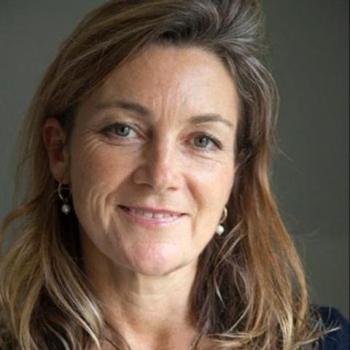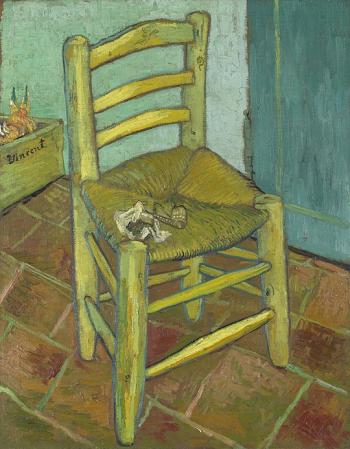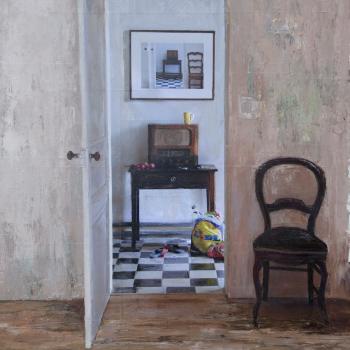Report on the lecture:
Our October lecture was given by Angela Findlay, showing pictures and sculptures from the last hundred years on the subject of empty chairs. Empty chairs in art have a long and poignant history, including in multiple depictions of the Last Supper. They depict the absence of someone but with artifacts show the person even in their absence. Angela Findlay started by showing Van Gogh's very famous painting of an empty chair, which is one of a pair with a picture of Gauguin's chair. They had quarrelled and parted, and the empty chairs illustrated that. Angela then showed many other more recent examples, including castings of many chairs as a memorial to the Holocaust, and Ai Weiwei's use of many traditional Chinese stools assembled into patterns to investigate the relationship of the individual and the state in China. Columbian artist, Doris Salcedo, stacked 1,550 chairs on the Palace of Justice in Bogota to remember 1550 victims of a siege of the building, with the chairs being lowered down the face of the building over 52 hours of the siege, at the time of the deaths of the individuals. Our lecturer was able to show how the empty chair is an excellent metaphor for people's absence without resorting to explicit depictions of violence and death.
We all use chairs! But over the past 150 years artists across the world have been using the humble chair as a conduit for profound ideas on themes from protest, absence and memory, to domestic or everyday life.
Starting with arguably the world’s most famous empty chair by Vincent van Gogh, we move through 20th century Europe. Egon Schiele, René Magritte, Gerhard Richter, Joseph Beuys all used empty chairs for personal expression, while across the Atlantic in America, Andy Warhol, Robert Rauschenberg, Joseph Kosuth and Bruce Nauman used chairs to develop the exciting new artistic movements arising in the sixties.
(Please click on the blue print above to continue reading)
The Palestinian artist, Mona Hatoum, adapted chairs to explore female identity and the Columbian artist, Doris Salcedo, stacked 1,550 between two buildings to remember anonymous victims of war.
Right up to the present day, the Chinese artist and activist, Ai Weiwei, uses chairs to explore East/West traditions and the relationship of the individual to the state. These are just some of the many diverse artists and uses of chairs we will be looking at in this talk. And as in all my lectures, my personal connection as an artist, who has worked with chairs throughout her career, will aim to bring the subject to life. These are just some of the many diverse artists and uses of chairs we will be looking at in this talk. And as in all my lectures, my personal connection as an artist, who has worked with chairs throughout her career, will aim to bring the subject to life.

Angela Findlay is a professional artist, writer and freelance lecturer with a long career of teaching art in prisons in Germany and England. Her time ‘behind bars’ and later as Arts Coordinator of the London-based Koestler Arts, gave her many insights into the huge impact the arts can have in terms of rehabilitation. Though novel, her ideas were effective and in 2016 she was invited by the Ministry of Justice to support the case for the arts to be included in new, progressive programmes of rehabilitation and education. Brexit unfortunately reversed the direction of prison policy but art's role is still vital. In the past decade Angela’s Anglo-German roots led her to research Germany’s largely unknown post-WW2 process of remembrance and the extraordinary culture of 'counter memorials' and site-specific artworks that emerged to express national shame and apology. With the current debates on statues and monuments, the ways Germany has tried to deal with its dark past is more relevant and inspiring than ever. Angela has a BA(Hons) in Fine Art, a Diploma in Artistic Therapy (specialising in colour) and her paintings have been widely exhibited both nationally and internationally. Her book - In My Grandfather’s Shadow - expanding on the above subjects was published by Penguin Transworld in July 2022.




